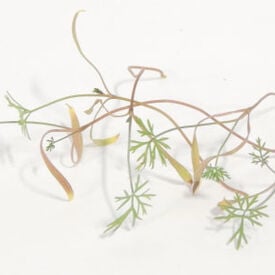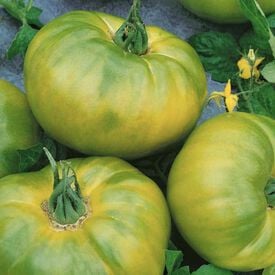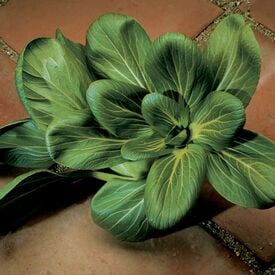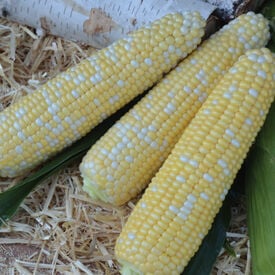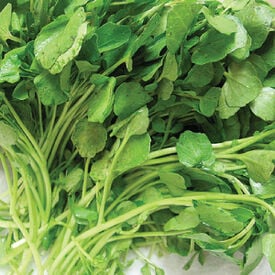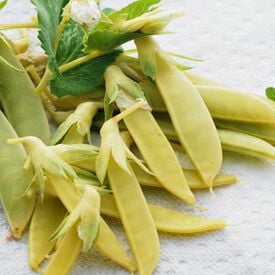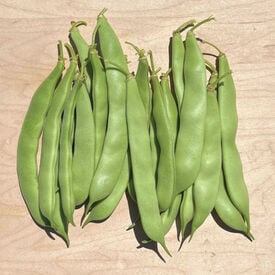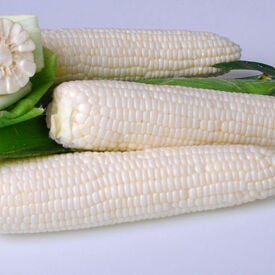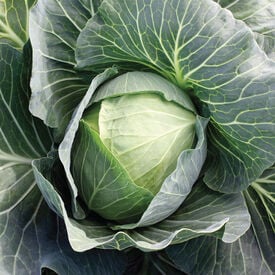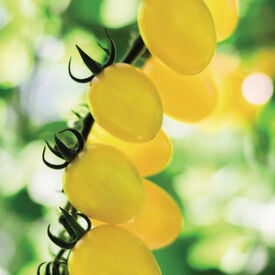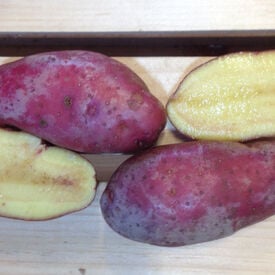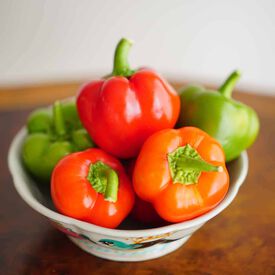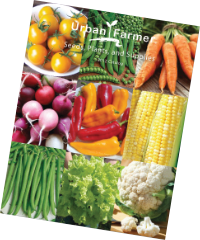The Bouquet Dill is a zesty microgreen with a tangy dill flavor! This microgreen is one of our favorite zesty flavors to add to salads and sanwiches. The Bouquet Dill Microgreen has a dull tangy dill flavor that is somewhat similar to carrots and cilantro. Days to Harvest: 15-30 Days
Chef's Choice Green Tomatoes are a delightful and unique variety of tomatoes known for their vibrant green color and exceptional flavor. These tomatoes have a fascinating history rooted in the world of culinary innovation. Developed by renowned tomato breeder Brad Gates, the Chef's Choice series was created to provide chefs and home gardeners with a range of exceptional tomato varieties. The green version, Chef's Choice Green, stands out for its outstanding qualities. Chef's Choice Green Tomatoes typically grow to a medium to large size, with fruit that can reach diameters of 3 to 4 inches (7.5 to 10 centimeters). They have a slightly flattened, beefsteak-like shape, which is ideal for slicing and adding to salads or sandwiches. The tomatoes are known for their rich, complex flavor, balancing a sweet and tangy taste with a hint of earthiness, making them a versatile choice for culinary creations. The plants that produce Chef's Choice Green Tomatoes are indeterminate, meaning they continue to grow and produce fruit throughout the growing season. They are known for their vigorous growth, often reaching heights of 6 to 8 feet (1.8 to 2.4 meters) or more, depending on growing conditions. These plants thrive in warm climates with plenty of sunlight and well-drained soil. Adequate support and pruning may be necessary to manage their size and ensure healthy fruit production. Overall, Chef's Choice Green Tomatoes are a fantastic addition to any garden, offering a unique and delicious twist on traditional tomato varieties.
Feng Qing Choi cabbage is a slow bolting Mei Qing Choi type with good plant size and dark leaf color. This variety has excellent holding ability and uniformity.
A delicious main-season bicolor with excellent husk protection and consistent tip fill. Excellent variety for roadside stands and fresh markets. Holds well in the field. Xtra-Tender™ eating quality.
The Upland Cress is a highly nutritious aquatic herb. This cress is a slow to bolt green, but once it's established it will take off and have a long growing season! Upland's 6-8" rosettes of dark green, glossy, rounded leaves are very tasty and refreshing. Upland is very similar to watercress, but is much easier to grow!
Opal Creek is a unique cross of a golden snow pea and a green snap pea. Produces a mild pea with flattened pods of a snow pea. Grows on 5-6 foot vines that produce an abundance of delicious yellow pods.
The Taylor Dwarf Horticulture Bean, also known as the Taylor Horticulture Bean or simply Taylor Dwarf Bean, is a popular heirloom bean variety prized for its delicious flavor and historical significance. This bean variety has a rich history dating back to the early 19th century in the United States. It is a bush-type bean, which means it grows in a compact, bushy form rather than climbing like pole beans. Taylor Dwarf Horticulture Beans are highly regarded for their superb taste, which is characterized by a creamy texture and a slightly nutty, earthy flavor. The beans are typically harvested when they are young and tender, making them ideal for fresh consumption or canning. The pods of the Taylor Dwarf Horticulture Bean are medium-sized and typically measure around 4-5 inches in length. The plants themselves are relatively small and bushy, reaching a height of about 18-24 inches, which makes them suitable for smaller gardens or container gardening. This variety has a relatively short maturity period, typically taking around 55-60 days from planting to harvest. The beans themselves are a pale cream or off-white color. Taylor Dwarf Horticulture Beans are known for their good disease resistance, which helps ensure a healthy crop. In terms of yield, you can expect a respectable harvest of beans per row, with each plant producing multiple pods. Proper spacing between plants should be around 4-6 inches apart in rows that are spaced about 18-24 inches apart. These beans thrive in well-drained soil with good organic matter content and prefer full sun for optimal growth. Adequate moisture and regular harvesting will help ensure a bountiful crop of these delicious and historically significant beans.
Argent is a heterozygous sugary enhancer with excellent eating quality. It is noted for its wide adaptability and disease tolerance. High Resistance: Stewart’s Wilt. Intermediate Resistance: Northern Corn Leaf Blight.
SuperStar is a hybrid cabbage that produces the highest quality fresh market cabbages. It has excellent wrappers for a fancy pack along with excellent holding ability in the field and after harvest.
Limoncito is a delicious mini-plum variety with good yields. Excellent for fresh eating and salads. Bright yellow fruits that burst with flavor.
SPRING SHIPPING - Certified - The French Fingerling is a gourmet quality fingerling with a deliciously beautiful bright red skin. This fingerling has red skin and a creamy yellow flesh. The French Fingerling produces good quality, medium size tubers which are beautiful when served in various dishes.
This variety shows strong vigor and fruit setting ability, producing flavorful, bell pepper fruit with a hint of heat. Fruit is crispy and flavorful with a cute heart- shape appearance and thick flesh. Compact growth habit, can be grown in containers if needed. All-America Selections Award winner. Mini-bell variety.
